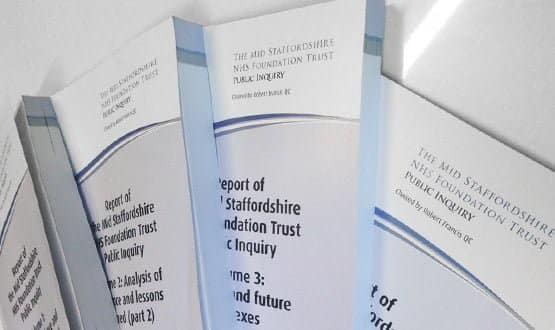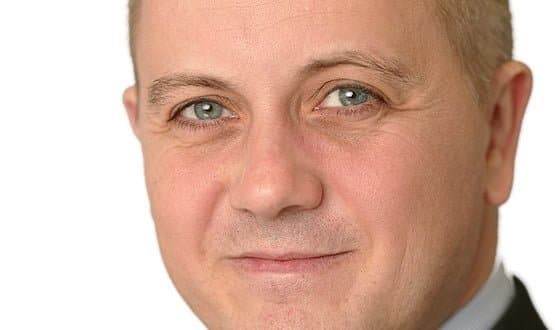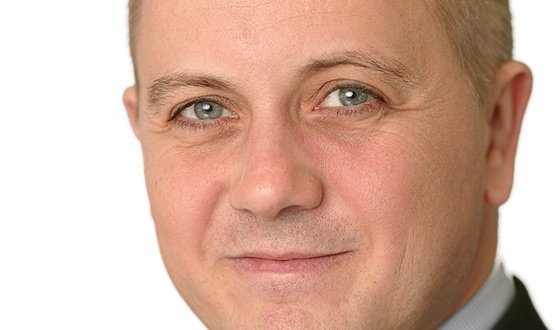It’s big, but is it clever?
- 6 February 2013

Journalists wanting to attend the press conference at which Robert Francis QC was due to deliver his final report on the scandal at Mid Staffordshire NHS Foundation Trust had to register in advance.
That’s not particularly unusual. However, the reason given, that the inquiry would only have enough reports for the reporters that it was expecting, was.
All became clear when the report was distributed; in a box containing three volumes and an executive summary that runs, in itself, to 100 pages.
In total, the final report on the Mid Staffordshire NHS Foundation Trust Public Inquiry contains more than 1,700 pages and 290 discussion points and recommendations. It’s not a thing to print lightly.
Everything I ever wanted to know about the NHS…
Unfortunately, the sheer size of the report is likely to undermine its impact. It’s hard to imagine that many people will ever read the whole thing, or how they would remember any detail if they did.
Added to that, the report is extremely discursive. Sometimes it reads as if Francis is anxious to record everything he learned about the NHS in the best part of two years of witness testimony and expert seminars.
In those 1,700 pages, there is a chapter on hospital mortality statistics that recounts the history of the development of the Hospital Standardised Mortality Ratio and the early disputes about whether it showed that Mid Staffs had a real or a statistical problem.
However, chapter five stops dead by noting that Francis’ first inquiry into Mid Staffs, which reported in 2010, called for a new indicator to be developed and that the Summary Hospital-Level Mortality Indicator had since been devised.
Disappointingly, the further development of this indicator, and how it might fit into the tougher, more comprehensive system of regulation that Francis would clearly like to see, is not really addressed.
Similarly, the report devotes a chapter to information more generally, which includes everything from speculation on how to define information to potted histories of the many and various bodies responsible for producing named indicators.
Along the way, the report considers, and apparently endorses, the ideas of a number of expert witnesses for developing electronic patient record systems that can do everything from provide good, aggregate data to get patients involved in their care.
However, chapter 26 also runs out just at the point at which even the most patient reader might expect some concrete proposals to start.
Francis was apparently convinced by those witnesses who told him that this “does not require a vast computer system applied throughout the country” since “efforts in that direction have not succeeded.”
But beyond that he puts his hopes in the NHS information strategy, the ‘Power of Information’, which came out last year and which he describes as “potentially a very important development”, backed up by a new legal requirement on boards to put them in place, and oversight from regulators.
Lots of interesting ideas
On the upside, what Francis endorses when it comes to new IT systems, data collection and analysis, and publication, is very much in line with recent government policy.
So it may be that while his recommendations are far from hard-hitting, others will be able to use them to reinforce the direction of travel.
The NHS Commissioning Board is clearly determined to get electronic patient records into hospital to meet its own data collection demands; and national director of patients and information Tim Kelsey has a new idea every day for getting data to third parties and patients.
Indeed, it could be argued that Francis’ discussions of IT, data and patient feedback are typical of his whole approach; which is not to call for yet another reorganisation of the NHS, or to disrupt current policy trends, but to try and give them the poke to work.
So, his most eye-catching proposals are not to call for a whole new regulatory system, but to beef-up the existing regulator, the Care Quality Commission, by getting it to appoint a chief inspector of hospitals, and to appoint a “specialist cadre” of new inspectors.
In support of this, Francis suggests that a list of fundamental standards to define NHS care should not only be drawn up but published, so that regulators know what they are looking for, and so that both staff and patients can be empowered to deliver them.
As a lawyer, however, he also suggests that new legal penalties should be put in place, as a sanction against staff injure patients by failing to stick by the standards “without good cause”, and against staff and managers who fail to tell the whole truth about what is going on within their organisations.
The government presses pause
Sensibly, the government has given itself time to respond to – and quite possibly just to read – Francis’ magnum opus.
Prime Minister David Cameron responded to say sorry to the families of those who were left screaming in pain, lying in soiled sheets, and even drinking from flower vases at Stafford Hospital, and committed the CQC to appointing a chief inspector of hospitals.
Otherwise, he said the government would respond in detail next month. What Cameron did not say may also be just as important as what he did, however.
The Prime Minister went out of his way to say that the problems at Mid Staffs were not down to the health secretary or the government policy of the time.
Instead, he told the House of Commons half an hour after Francis had left his press conference, that the public inquiry had found that the problems at Mid Staffordshire were caused by its culture and a wider attitude that “patient care was always someone else’s problem.”
Yet he named no names when he said the problems were also caused by a failure to “act on data which should have implied a real cause for concern” or a desire to “explain the positives” rather than undertake “critical analysis.”
This refusal to seek “scapegoats” will upset the Save the NHS pressure group that played such a big role in bringing the scandal to light, since its leaders have made no secret of the desire to see some big heads roll.
But Cameron seems to believe that enough time has already passed, and enough changes have already been made, to avoid the blame game.
In his statement, he noted the government’s own reorganisation of the NHS and creation of the NHS Commissioning Board in this respect, and the introduction of new quality measures, starting with the imminent ‘friends and family’ test.
Overtaken by events?
All public inquiries are, by their nature, backward looking. The events that Francis has looked into in so much detail are now the best part of a decade old, and his two inquiries have spanned two governments with very different ideas about how to organise and run the NHS.
In the circumtances, his decision not to go back and apportion blame to individuals who have either left the service or gone on to become very senior figures in it may not be popular, but it is probably sensible.
If heads were going to roll over Mid Staffs they would surely have rolled two years ago, when the full horror of ths scandal came out in the first Francis report.
Similarly, the last health secretary, Andrew Lansley, ordered the latest investigation in response to demands for a full-blown public inquiry.
Yet its launch coincided with the start of Lansley’s hotly contested ‘Liberating the NHS’ reforms. Two years on, as they are about to be implemented, it would be odd to call for another whole-sale reorganisation of the health service, or even a whole new suite of regulatory bodies.
Francis has now said clearly in two reports that Mid Staffs inflicted “terrible and unnecessary suffering” on “hundreds of people who were failed by a system that ignored the warning signs of poor care, and put corporate self-interest and cost control ahead of patients and their safety.”
His final report ultimately concludes that what is needed now is a culture change in the NHS, that not only emphases quality care but openness and transparency about whether it is being delivered.
Beyond that, he may have had little choice but to conclude that the details are down to others, aside from some specific recommendations that may give them heft and, of course, legal standing.
An opportunity mostly missed
Many of the journalists gathered at the QE2 centre in London this morning have done relatively little with the report, beyond revisiting the horrors of Mid Staffs and asking pressure groups and families for their disappointed reactions.
Coverage of and discussion of the more forward looking elements of those 1,700 pages looks set to be far more muted.
The month before the government returns to its recommendations is likely to be more than enough for ministers to find further examples of actions already taken, if they are so-minded.
And with the grit of the Francis report buried under its mountain of words, it may be hard for campaigners to continue to push for specific reforms.
As such, the Francis Inquiry looks like a missed opportunity. Yet it may give some reforms a shove. If so, it can only be hoped that the direction of travel set for the NHS is the one that it wants the health service to go in.



